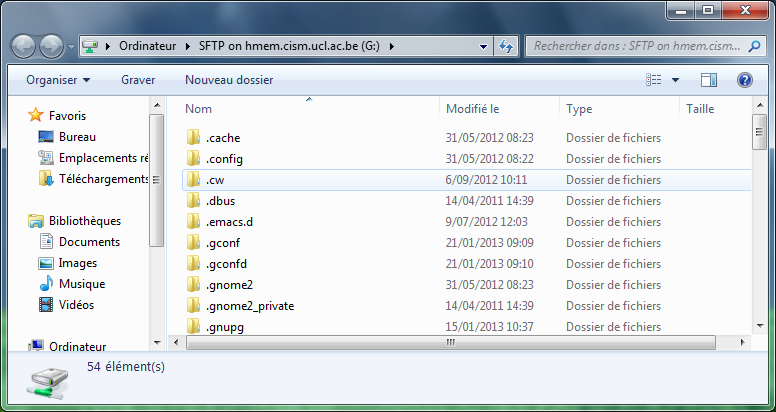How to use CÉCI clusters from Windows
This short tutorial shows how to connect to a CÉCI cluster from a Windows computer using Putty, and FileZilla.
- Install PuTTY suite
- Converting the private key
- Opening a shell with PuTTY
- Using the PuTTY SSH agent
- Creating a PuTTY Shortcut
- Troubleshooting a session
- Copying files with FileZilla
- Mounting the cluster filesystem with SFTP Net Drive
Install PuTTY
Download The latest release version of PuTTY windows installer. This will install:
- PuTTY (the Telnet and SSH client itself)
- PSCP (an SCP client, i.e. command-line secure file copy)
- PSFTP (an SFTP client, i.e. general file transfer sessions much like FTP)
- Plink (a command-line interface to the PuTTY back ends)
- Pageant (an SSH authentication agent for PuTTY, PSCP, PSFTP, and Plink)
- PuTTYgen (an RSA and DSA key generation utility).
Converting the private key
Before you can connect to a cluster, you need to 'translate' the OpenSSH-2 key you received into the key-file format that is used by PuTTY. To do so, you need to use the PuTTYgen software
- Launch PuTTYgen from start menu > PuTTY > PuTTYgen
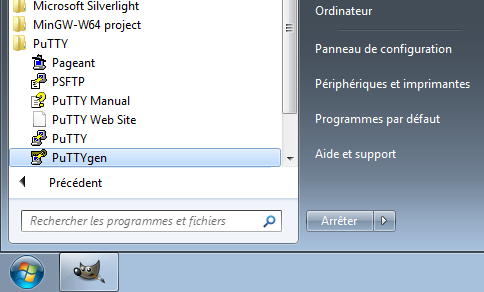
- Hit the 'Load' button
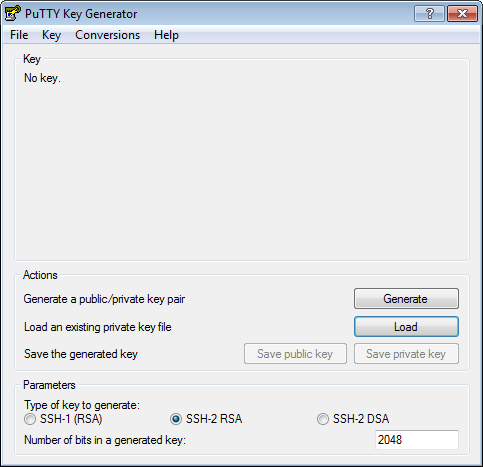
- Locate the 'id_rsa.ceci' file you received by email. Make sure to choose 'All files' in the 'Files of type' dropbox so that the file appears in the list. Click 'Open'.
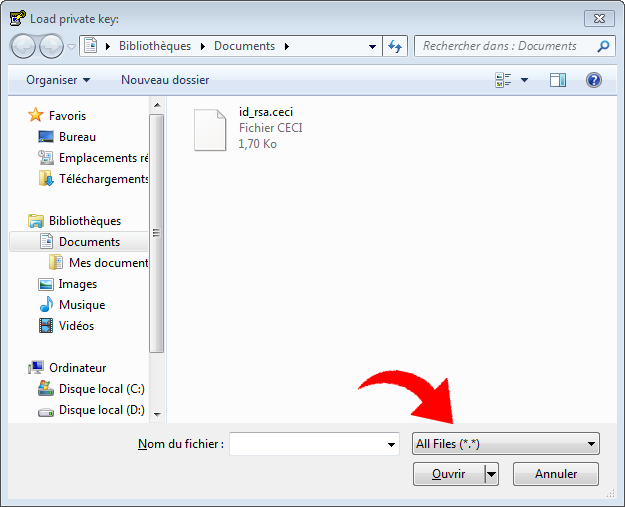
- You are prompted for your passphrase. Enter here the passphrase you chose while filling in the web application form.
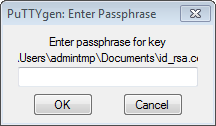
- Once the import succeeds, you get the following message:
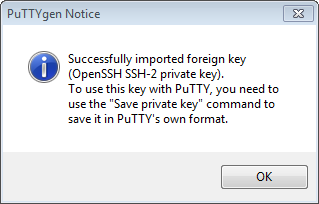
- You can change the 'Key comment' for better tracking your key.
Do not change the passphrase, it will stay the same as the imported key.
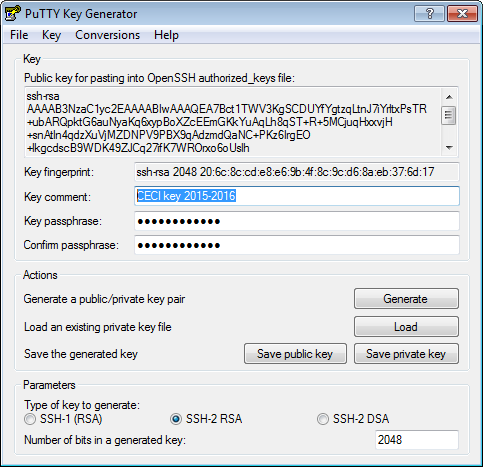
- Now save the new file by hitting the 'Save private key' button.
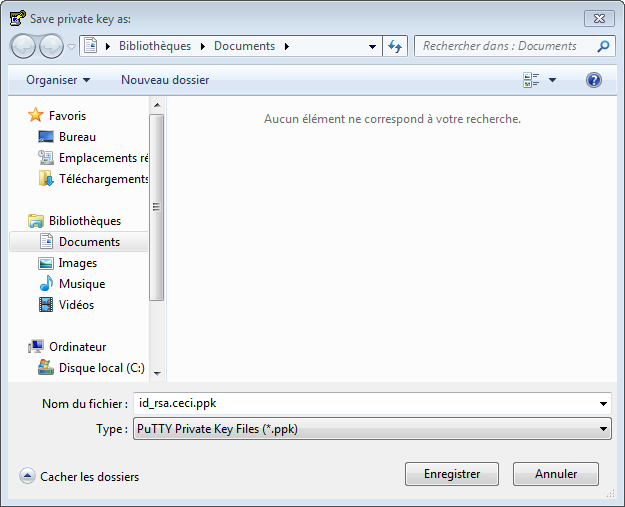
You are now ready to use PuTTY to access the clusters.
Opening a shell with PuTTY
- Launch PuTTY from 'start menu' > PuTTY > PuTTY and set the hostname,
e.g.hmem.cism.ucl.ac.be
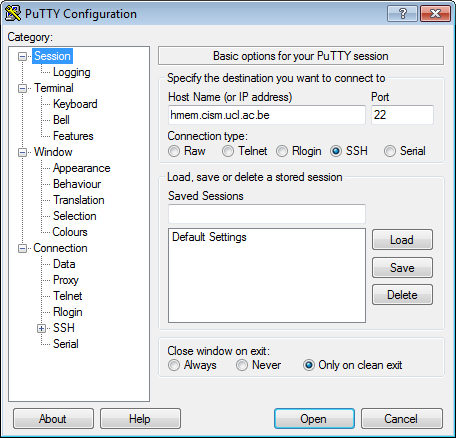
- Under the 'Connection > Data' category, put your login in the 'Auto-login username' box.
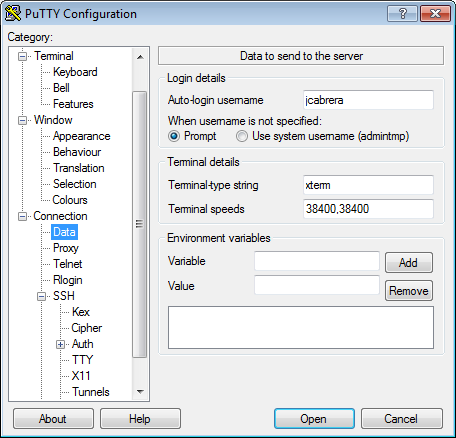
- Under the 'Connection > SSH > Auth' category, click the 'Browse' button and locate the file you saved earlier with PuTTYgen. You can tick the 'Allow agent forwarding' option to use the agent for proxy connections
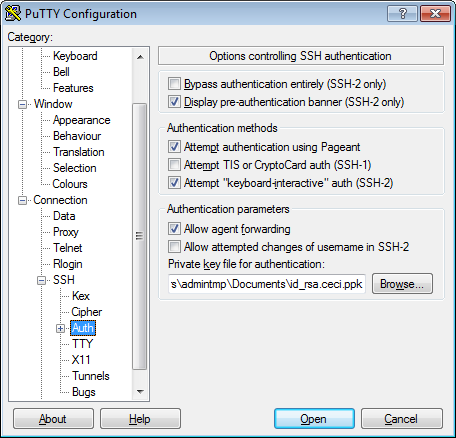
- Under the 'Connection > SSH > X11' category, it is always useful to tick the 'Enable X11 forwarding' option. Beware that you need an X server such as Xming installed on your computer to be able to use X11 forwarding.
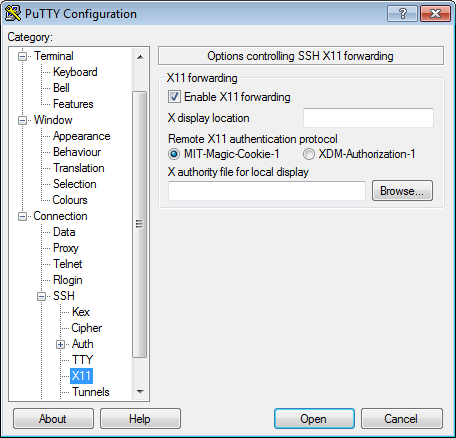
- At this point, you can come back to 'Session' category, set the
of the session name in 'Saved Session' field
and save the profile using the 'Save' button.
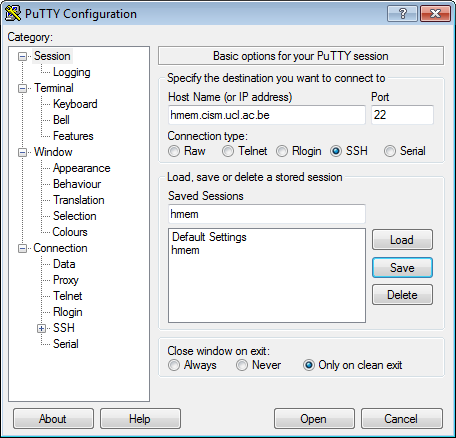
- Select the saved session and click 'Open' to start the connexion.
The first time you successfully connect, PuTTY will warn you that it does not know the computer. Click 'yes' if the host fingerprint matches the one announced in the cluster page
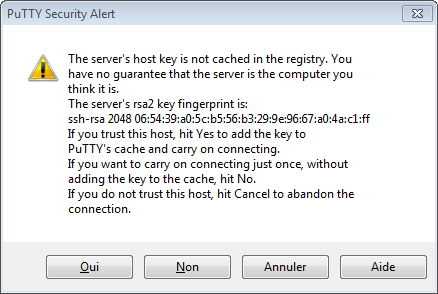
- Give your passphrase, i.e. the password you chose while filling in the web application form.
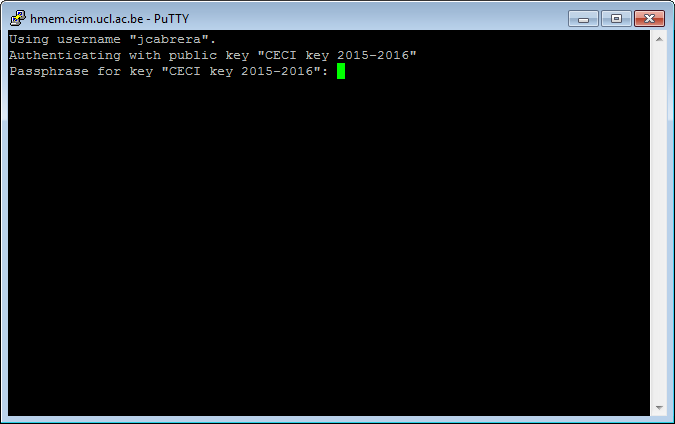
- You are now connected.
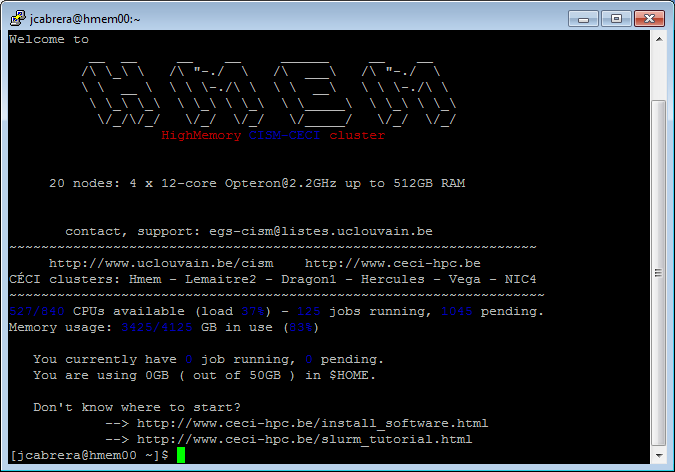
Using an SSH agent.
If you do not want to type your passphrase each time you connect, you can use
the PuTTY SSH Agent (pagent.exe).
- If you do not have it, download it from the PuTTY website. Start it ; it should then be visible in your task bar.

- Then click it and choose 'Add key'.
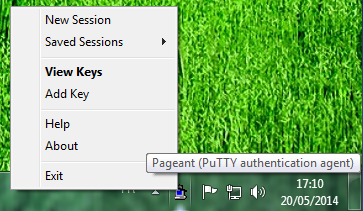
- Choose the file you generated using PuTTYgen (cf. supra).
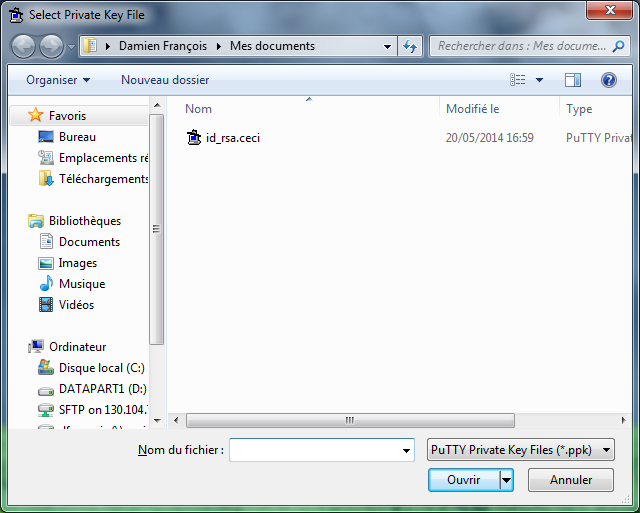
- Enter your passphrase.
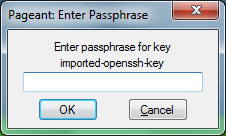
Now you can check that your key has been loaded by clicking on the icon in the tray bar and choosing 'View keys'. Connect using PuTTY without typing your passphrase (as long as the agent is running.)
You can forward your agent through your SSH connexions (for instance to copy data from one cluster to another) by ticking the box “Allow agent forwarding” in Connection > SSH > Auth.
You can get more information about the use of the agent in the online documentation.
Creating a PuTTY shortcut
- Right click on the PuTTY shortcut 'start menu' > PuTTY > PuTTY and copy it.
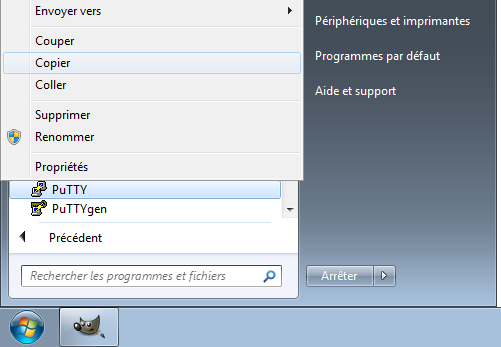
- Paste it onto the Desktop and right-click to change the properties.
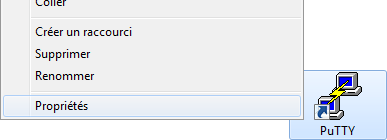
- Add '-load Session' at the end of the 'Target' command. Where Session is the name of the session name of the previously saved profile e.g. hmem.
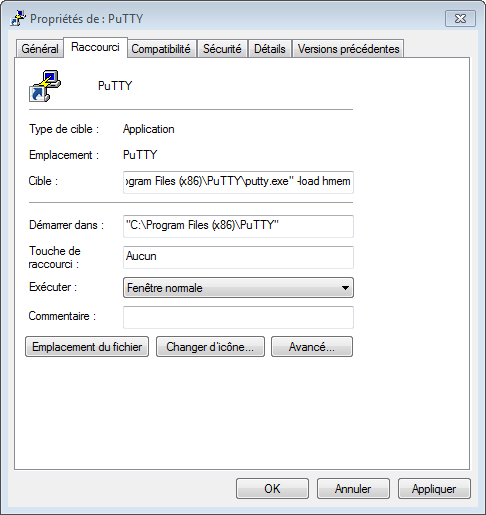
- Change the name of the shortcut to the specific connexion name.

Troubleshooting a session
- If you have problems connecting to a server, you can access to the session
log. Rigth click on the PuTTY window title.
In the PuTTY menu select 'Event Log'
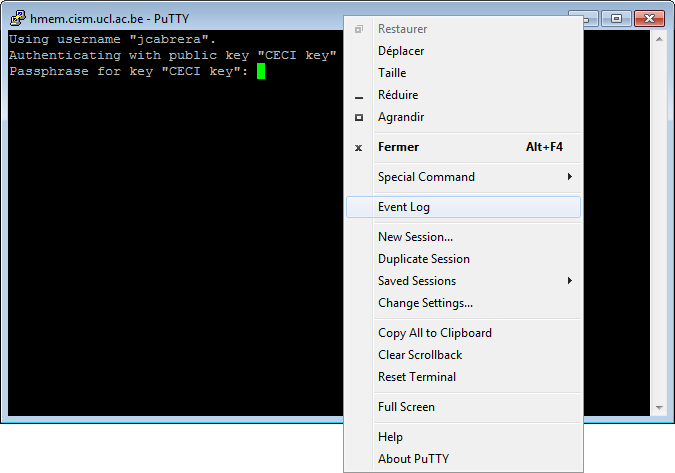
- This will display the event log.
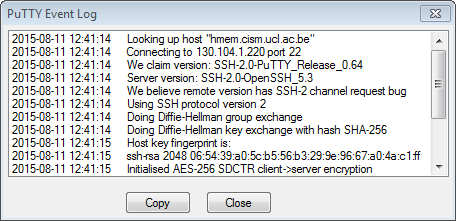
Copying files with FileZilla
-
First you need to get the PuTTY SSH Agent (
pageant.exe) running (see the previous section.) -
Launch FileZilla and enter the host (e.g. hmem.cism.ucl.ac.be) and your login in the 'Quick connect' bar. Specify the port (22) explicitly.
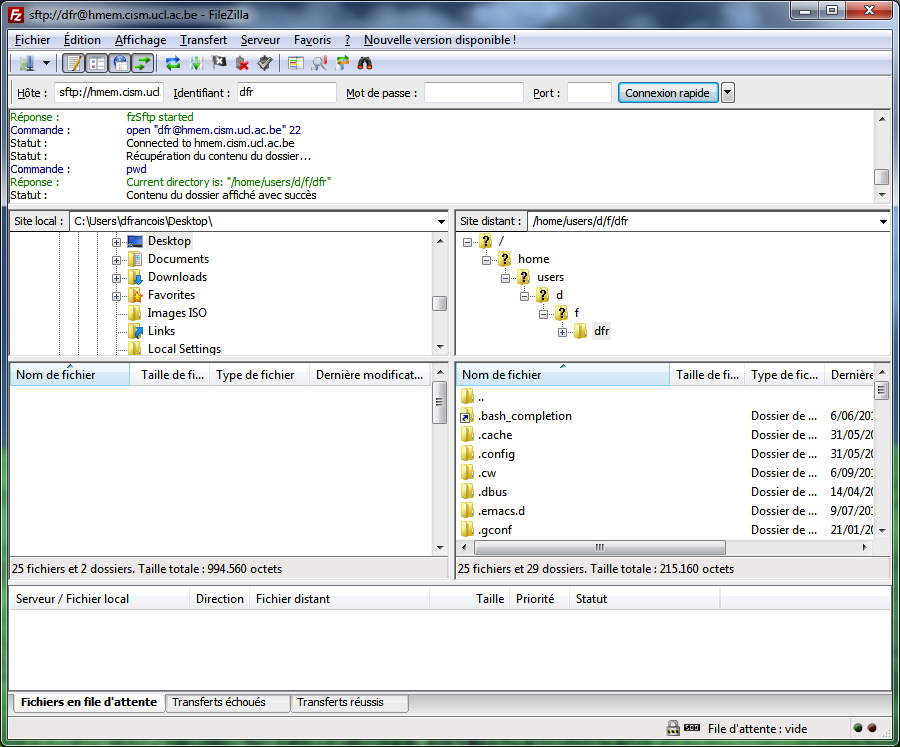
- Then you can drag and drop files from and to the cluster.
Mounting the cluster filesystem with SFTP Net Drive
- Launch SFTP Net Drive
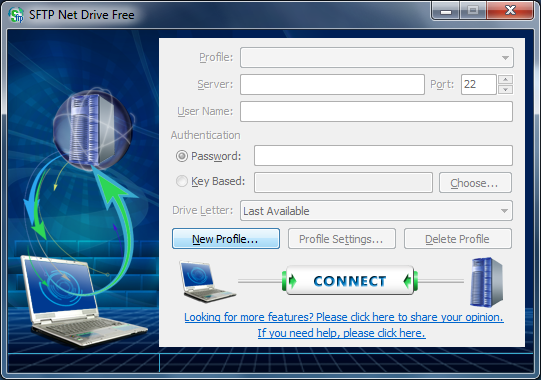
- Click 'New Profile' and enter the cluster full name.
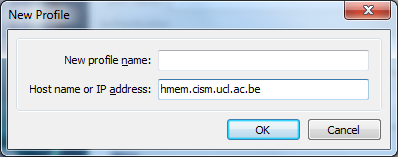
- Enter your login and choose 'Key Based'
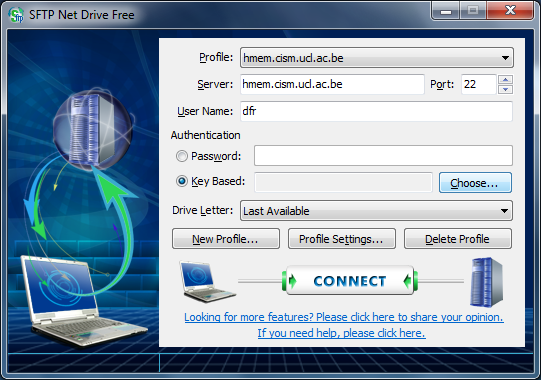
- The easiest is to choose 'use Authentication Agent' in conjunction with the PuTTY Agent (see previous section.)
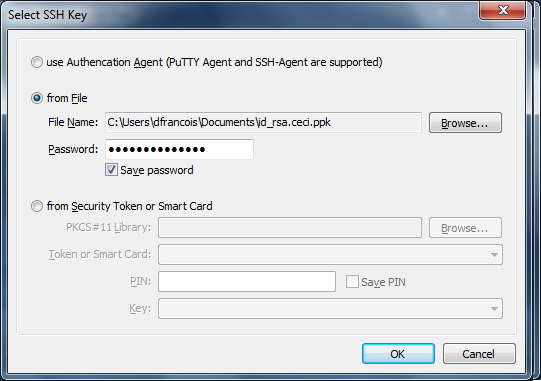
- Check and accept the public key from the server (see previous section.)
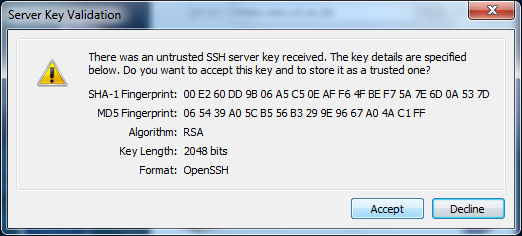
- The content of your directory on the cluster is then mapped to a local disk letter.
